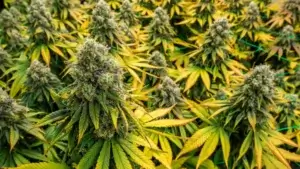Definition:
A CBD strain is a specific variety of cannabis bred to contain high levels of cannabidiol (CBD) and low levels of tetrahydrocannabinol (THC), offering therapeutic benefits without significant psychoactive effects.
Purpose and Usage
CBD strains are widely used for medicinal and wellness purposes, offering relief from conditions such as pain, inflammation, anxiety, and epilepsy. They are suitable for individuals who want the benefits of cannabis without the intoxicating effects of THC. CBD strains are consumed in various forms, including smoking, vaping, and edibles.
How It Relates to Cannabis
- Characteristics of CBD Strains:
- High CBD content (e.g., 10–20% or more).
- Low THC content (typically less than 0.3% for hemp-derived strains).
- Balanced cannabinoid profiles in some strains (e.g., 1:1 CBD to THC ratio).
- Common CBD Strains:
- Charlotte’s Web: Known for its use in managing epilepsy and seizures.
- ACDC: Offers therapeutic effects with virtually no psychoactivity.
- Harlequin: A balanced strain with mild THC for enhanced effects.
- Uses in Cannabis Products:
- Incorporated into oils, tinctures, and topicals for targeted relief.
- Smoked or vaped for faster-acting effects.
- Used in edibles or capsules for longer-lasting effects.
Common Misconceptions
- CBD strains cannot contain THC: Some CBD strains have low or balanced THC levels, which can enhance the entourage effect.
- CBD strains are less effective than high-THC strains: Effectiveness depends on individual needs; CBD strains are ideal for therapeutic use without intoxication.
- All hemp strains are CBD strains: While hemp strains are often high in CBD, not all are bred for therapeutic use.
Alternatives
- High-THC Strains: Used for recreational or medical purposes where psychoactive effects are desired.
- Broad-Spectrum CBD Products: THC-free options derived from CBD strains.
- Full-Spectrum Products: Include all cannabinoids and terpenes, including trace amounts of THC, for the entourage effect.
Importance of CBD Strain
CBD strains are crucial in expanding the accessibility of cannabis for therapeutic use. By minimizing THC levels, they provide a safe and effective option for individuals seeking the benefits of cannabis without the psychoactive effects. Their development has paved the way for innovative medical cannabis products and broadened the appeal of cannabis to new user groups.





